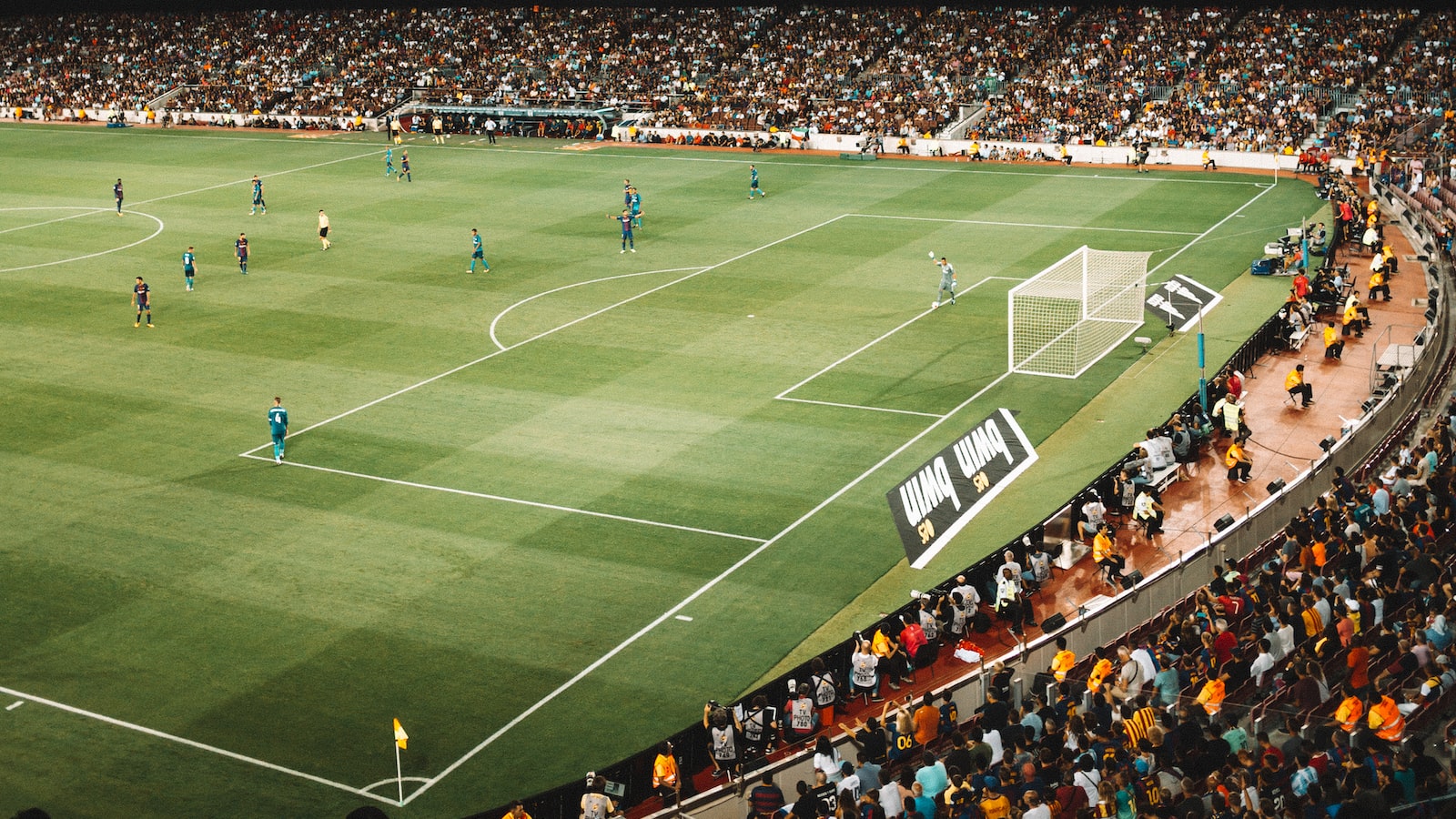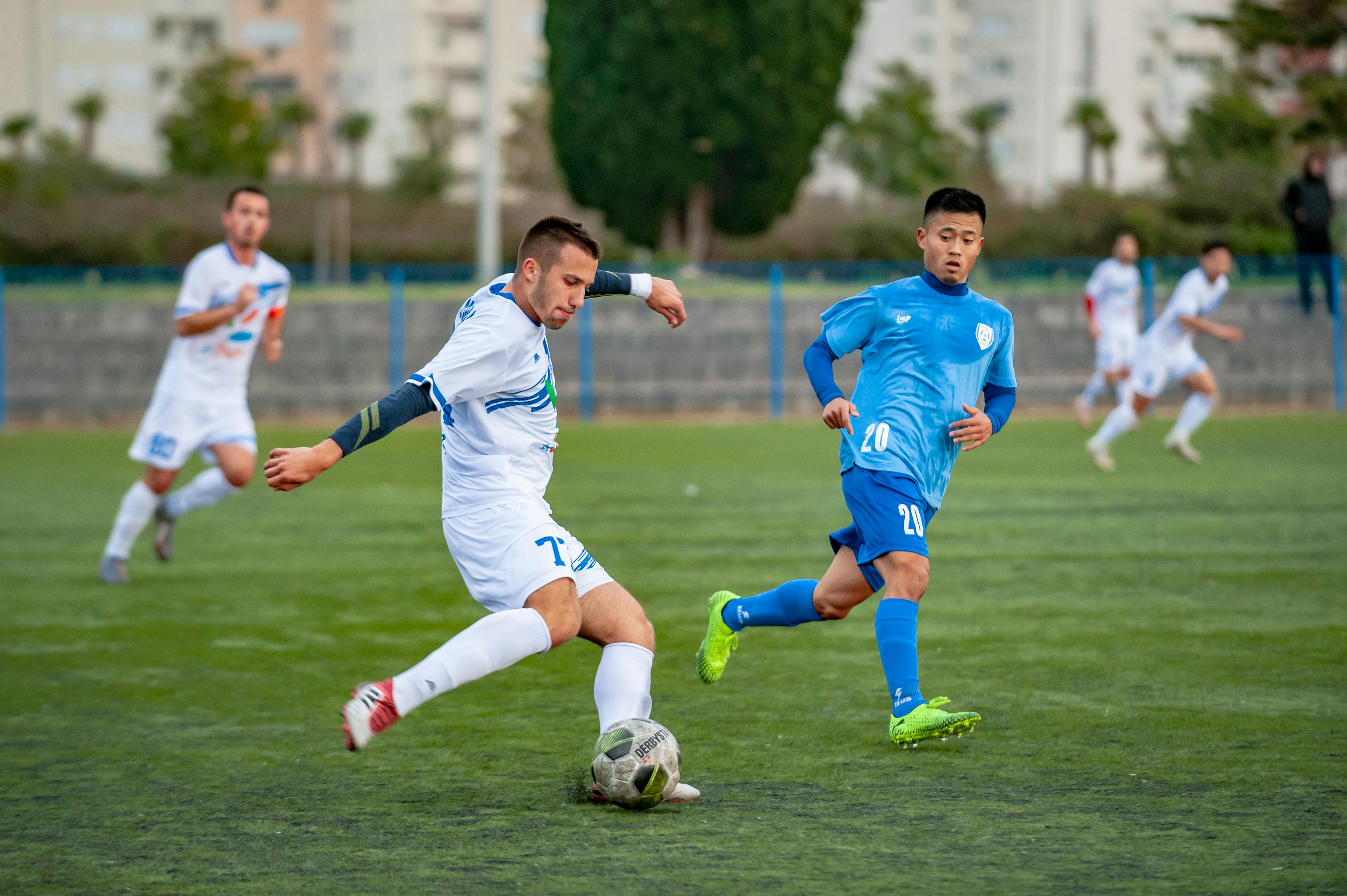How To Wear Soccer Shin Guards

Soccer shin guards are an essential piece of soccer equipment. They provide vital protection for the player, and wearing them correctly is key to getting the most out of them. This guide will explain how to wear soccer shin guards correctly, ensuring that you are fully protected when playing the sport.To wear soccer shin guards properly, start by selecting the appropriate size for your leg. Make sure that the guards cover your shins entirely from the ankle to just below the knee. Then, put on a pair of socks that are long enough to cover the shin guards. Next, slide your foot into the guard and secure it with any straps or fasteners that come with it. Finally, pull on a pair of soccer cleats over top of the guard and socks to ensure maximum protection.
What Type Of Soccer Shin Guards Are Best?
Choosing the right type of soccer shin guards can be a difficult decision. There are many different types available, and each one has its own advantages and disadvantages. The best shin guards for you will depend on your individual needs. Some of the main types of shin guards include slide-in, ankle-length, and knee-length varieties.
Slide-in shin guards are lightweight and offer minimal protection compared to some other types. They are easy to slip into your soccer cleats, making them a popular choice among recreational players who don’t need a lot of protection. However, if you play in more competitive leagues or tournaments, these may not provide enough protection for your needs.
Ankle-length shin guards offer more protection than slide-in guards but still remain lightweight and comfortable. These are a great option for players who want to protect their ankles while still having full range of motion in their legs. The downside is that they can be uncomfortable if worn for long periods of time due to the extra material around the ankle area.
Knee-length shin guards offer the most protection out of all the different types. They cover from your toes all the way up to your knees, ensuring maximum protection against potential injuries from hard tackles or kicks. Knee-length shin guards can be bulky and heavy though, which can make it difficult for some players to move quickly on the pitch.
Ultimately, choosing the right type of soccer shin guard will depend on what level you are playing at and what type of protection you need. Slide-in guards are great for recreational players who don’t need a lot of padding around their ankles or knees. Ankle-length shin guards offer more protection than slide-ins but still remain lightweight and comfortable. And knee-length shin guards offer maximum protection but can be bulky and uncomfortable for some players due to their size and weight.
How To Select The Right Size Shin Guard
Selecting the right size shin guard can be a daunting task for any soccer player. It is important to find the right size guard for your body type and playing style in order to ensure maximum safety and protection. When selecting a shin guard, there are several factors to consider such as size, material, padding, and fit.
Size is one of the most important factors when selecting a shin guard. The length should extend from just below the knee to just above the ankle when worn correctly. Too short or too long can reduce protection and increase the risk of injury. It is also important to check for adequate width so that it covers the widest part of your shin.
Material is another factor when selecting a shin guard. Most guards are made from lightweight plastic or foam-based material which provides good protection without hindering movement. Padding should also be taken into consideration as it helps absorb impacts and adds extra cushioning. Many guards also have adjustable straps which help keep them in place during play.
Finally, fit is probably the most important factor when selecting a shin guard. A good fit will provide maximum protection while still allowing you to move freely during play. The best way to test fit is by trying on different sizes and styles until you find one that is comfortable yet still provides adequate protection.
In conclusion, finding the right size shin guard can be a difficult task but with some careful consideration of size, material, padding, and fit you can find one that will provide optimal protection and performance on the field.
How To Secure Your Soccer Shin Guards
Soccer shin guards are essential protective gear for any soccer player. They prevent the impact of the ball on your leg from causing potentially serious injury. Without proper protection, a hard kick from the ball can leave you with a bruise or worse. However, if your shin guards are not properly secured, they won’t be able to do their job properly. Here are some tips to help you secure your soccer shin guards and ensure you keep them in place during a match.
The first step in securing your soccer shin guards is making sure they fit properly. If they’re too big or too small, they won’t stay in place as you run up and down the field. Measure your leg and try on different sizes of shin guards until you find one that fits snugly without being too tight.
Once you’ve found the right size, it’s time to fasten them securely in place. Soccer shin guards typically come with straps that run around the calf and underneath the foot. Adjust these straps so that they are tight enough to hold the pad securely but not so tight that it causes discomfort when playing. You may also want to consider using tape or bandages as an extra layer of security, particularly for games on wet or muddy fields where there is more risk of slipping out of position.
Finally, check your soccer shin guards before each game to make sure everything is secured properly and there are no loose straps that could cause discomfort or distraction during playtime. This will help ensure that your protective gear remains effective and can help keep you safe during practice or competitive matches.
Following these simple steps can help ensure that your soccer shin guards stay secure and provide the necessary protection when playing soccer!
1. Choose the Right Size
When it comes to soccer shin guards, choosing the right size is essential for long-lasting comfort. Make sure to measure your lower leg and calf circumference to determine the most appropriate size for your needs. It’s also important to remember that shin guards come in a variety of shapes and sizes, so take your time to find the one that fits you best.
2. Secure with Tape or Straps
Once you have chosen the right size, make sure you secure it properly by using tape or straps. This will ensure that your shin guard stays in place during play and prevents any uncomfortable sliding or movement while playing. You can also use ankle straps if you find they provide extra security.
3. Wear Socks Over Shin Guards
When wearing shin guards, it’s important to wear socks over them for additional protection and comfort. This will help prevent any chaffing or irritation from the material of the shin guard and provide cushioning between your skin and the hard surface of the guard.
4. Change Your Shin Guards Regularly
Finally, make sure you change your shin guards regularly in order to ensure maximum comfort while playing soccer. With regular use, they can become loose or worn down, causing discomfort during play. Replacing them regularly will help keep them in top shape and provide optimal protection throughout your game.

Adjustable Soccer Shin Guards – Pros & Cons
Adjustable soccer shin guards are a great option for those who want the perfect fit and comfort for their match. The adjustable feature means that you can adjust the size to fit your legs perfectly, giving you better protection from injuries during the game. These guards also come in different styles and materials, allowing you to choose one that best suits your needs. Here are some of the pros and cons of adjustable soccer shin guards.
Pros:
The main benefit of adjustable soccer shin guards is that they offer an ideal fit for your legs. This means that you don’t have to worry about them being too loose or too tight, giving you maximum protection during the game. They also come in different styles, so you can choose one that goes well with your team’s uniform or matches your own personal style. Additionally, these guards usually come with shock absorbent padding, providing extra protection from impact during the game.
Cons:
One potential downside of adjustable soccer shin guards is that they tend to be more expensive than non-adjustable models, due to their higher quality materials and added features. Additionally, they can take some time to adjust correctly, which could leave you vulnerable during those few seconds before they are properly fitted. Finally, since these guards require regular adjustments to keep them fitting properly, they may not be ideal if you change sizes often or if your team requires a uniform guard for everyone on the team.
Different Types Of Soccer Shin Guard Straps & Closures
Soccer shin guards are an essential piece of safety equipment for anyone who plays the game. They protect the lower legs from impacts with other players and the ball, as well as providing some cushioning. However, they can only provide adequate protection if they fit properly and remain in place during play. That’s where the straps and closures come in. Different types of soccer shin guard straps and closures provide different levels of security, allowing players to find a solution that works best for them.
The most common type of soccer shin guard straps are velcro straps. These straps are easy to use and adjustable, allowing players to get the perfect fit every time. They provide a secure fit that won’t slip or move around during play, but can also be quickly removed if needed.
Another popular option is elastic straps. These straps are stretchy and provide a snug fit that won’t move during play. They’re also easy to put on and take off, making them a great option for those who don’t want to bother with velcro straps or knots.
Knots are another option for securing soccer shin guards in place. This method requires more time to secure properly but provides an incredibly snug fit that won’t move around during play. It may be more difficult to put on or remove than other options but is the most secure choice available when it comes to keeping shin guards in place during games or practice sessions.
Finally, some soccer shin guards come with built-in closures such as buckles or snaps. These can make it easier to get an exact fit quickly, without having to worry about tying knots or adjusting velcro straps each time you put your shin guards on. The downside is that these closures may not be as secure as other options, so they may move around more during play than other types of closures do.
Different types of soccer shin guard straps and closures have their own advantages and disadvantages, so it’s important for players to consider what will work best for them before making a purchase decision. Each type has its own benefits so it’s important to consider all of them when selecting a pair of shin guards for protection on the field
Soccer Cleat Compatibility With Different Types Of Shin Guards
Choosing the right soccer cleat is essential for any soccer player. Not only does the right soccer cleat provide optimal performance, it also ensures that the player’s feet remain comfortable and safe. When selecting a soccer cleat, it is important to consider the type of shin guard to be worn with it. Depending on the material of the shin guard, different types of soccer cleats may be more suitable. For example, if you are wearing a rigid plastic shin guard, you should choose a firm ground (FG) cleat as it will provide better support and stability than a soft ground (SG) cleat.
On the other hand, if you are wearing a softer foam-based shin guard, then an SG or turf (TF) cleat is more suitable. These types of cleats have shorter studs which provide better grip on softer surfaces such as turf or artificial grass fields. Finally, for players who wear ankle guards or compression sleeves on their shins, an indoor (IN) or multi-ground (MG) cleat is recommended. These types of cleats have shorter studs which provide better grip on indoor surfaces such as hardwood floors or gymnasiums.
In conclusion, when selecting a soccer cleat it is important to consider what type of shin guard you will be wearing with it in order to ensure optimal performance and safety. Different types of soccer cleats can be more suitable depending on the material of the shin guard being worn with them. Ultimately though, choosing the right combination of soccer cleats and shin guards will ensure that you get the best possible performance from your game!

Conclusion
Soccer shin guards are an essential piece of equipment for any soccer player. They protect the legs from any contact with the ball, another player and even the ground. They come in a variety of styles and sizes and should be chosen carefully depending on the position being played and the level of protection needed. Shin guards should fit snugly against the leg, covering both the shin and ankle. They should also be worn with appropriate socks to ensure maximum protection. With proper use and care, soccer shin guards can provide great protection while playing the game.
In summary, soccer shin guards are an important piece of equipment that every soccer player should have in order to protect their legs from any contact with other players, the ball or even the ground. The right size and type should be chosen depending on the position being played and level of protection needed. With proper fitting, wearing them correctly with appropriate socks and taking good care of them, soccer shin guards can provide good protection during matches or practice sessions.
